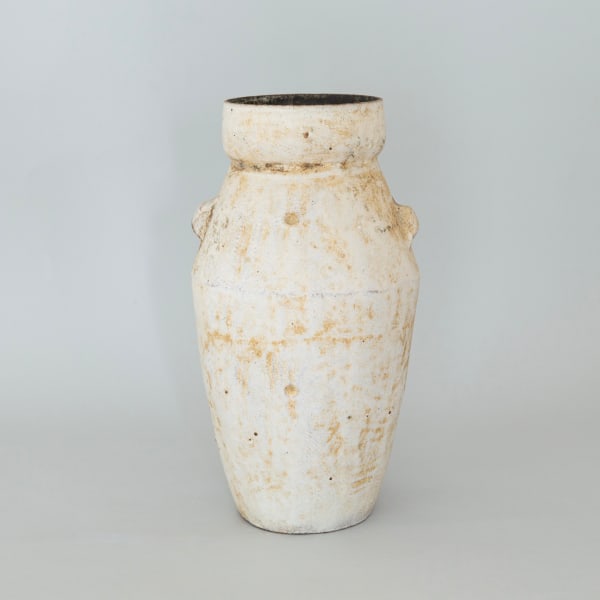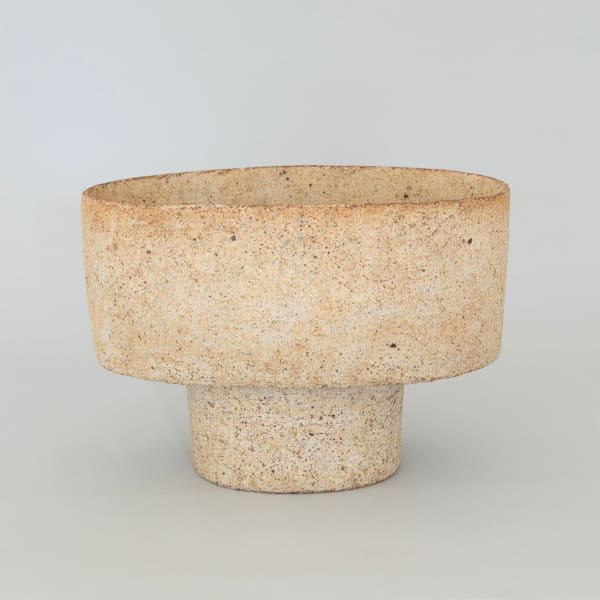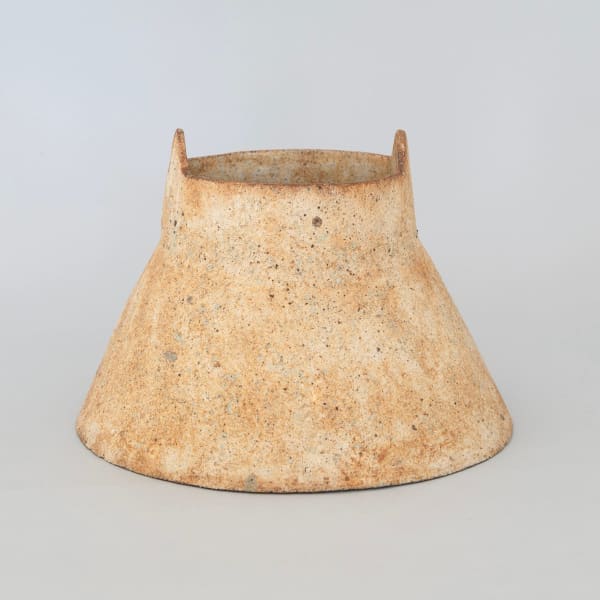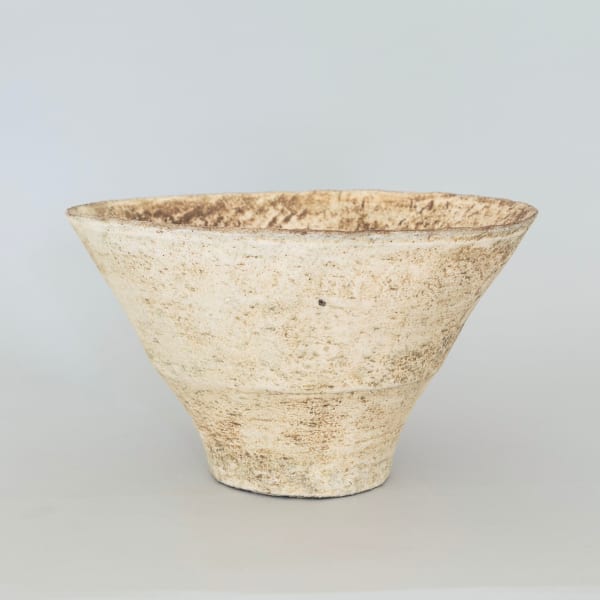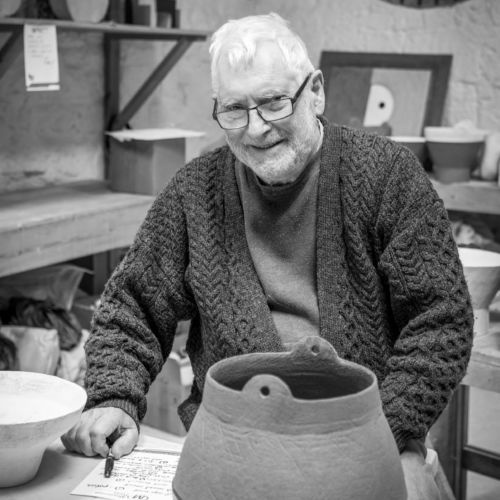Paul Philp b. 1941
Paul Philp is a ceramist, making pots that look to be ‘discovered rather than made’.
Philip began making ceramics over 60 years ago, starting out aged 20 making tableware. The artist describes his technique as ‘hand-built stoneware’, which he makes from ceramic that has been fired at a high temperature. The characteristic dry surface of his work is created without glazes, using instead a mixture of china clay and Devon ball clay to which he also adds wood ashes. This mixture is added and fired on in repeated firings,
For a period of about 15 years during the 1970s and 1980s, Philp took a break from making ceramics, instead focusing on restoring and rebuilding Llansôr Mill in Monmouthshire, a Grade-II listed property using traditional methods. Philp describes this period of his life as living the ‘good life’, using traditional methods of the peasants of the Dordogne region of France, he grew his own food and kept a variety of farm animals. This emphasis on old country ways led Philp to learn a great deal about the wildlife around him. Despite the break from creating ceramics at this time, Philp says he never stopped thinking about the art form. The artist continued studying areas of personal interest including ancient cultures, oriental and tribal art.
When Philp began making pottery again, his brother, an art dealer was able to help in getting his work shown at major international art fairs. Over the years, Philp’s work has been featured in both Ceramic Review and Crafts Magazine, along with articles in Ceramics Art and Perception (2014) and La Review de la Ceramique et du Verre (2006). He is represented by a number of international museums and galleries including Musée des beaux-arts Montréal, Musée Ariana, Geneva and The Clark Centre for Japanese Art, California. The work has been shown worldwide with exhibitions in Paris, San Francisco and London, among others.

